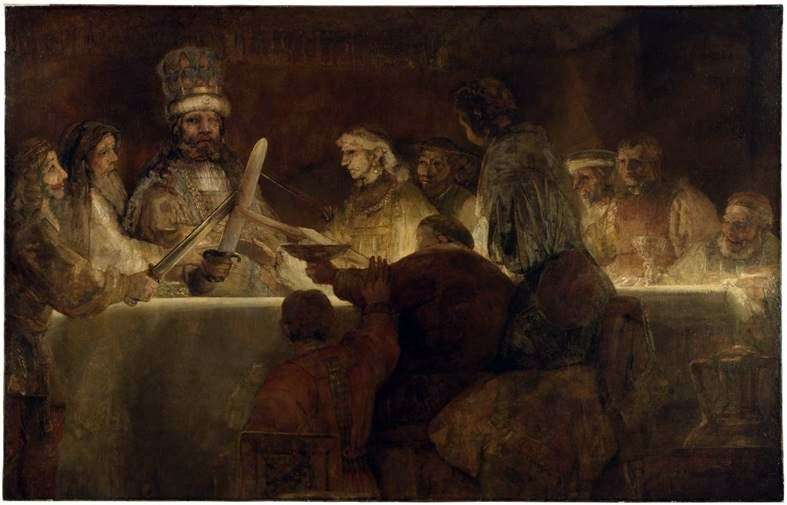
The painting of the Dutch artist Rembrandt van Rijn “The Conspiracy of the Batavians” or “The Conspiracy of the Batavas leader Julius Tsivilis”. The size of the painting is 196 x 309 cm, oil on canvas. As a symbol of Holland’s national independence and citizenship, the city council of Amsterdam chose the theme of the uprising of the Batavians against the Romans, a theme from the early history of the Dutch, to decorate the gallery around the conference room in the newly built classic city hall.
Actually, the painting “The Conspiracy of Julius Civilis” is a historical composition depicting the leader of the Batavian tribe, who were considered the ancestors of the Netherlands, who in the 1st century raised people to revolt against Rome. This topic was suggested fifty years before Hugo Grotius, following the narration of Tacitus, in order to strengthen the republican national self-consciousness. The corresponding specimens were already presented in the engravings of Antonio Tempest in paintings by Otto van Veens, which were probably binding examples for the eight required images. Order for the “Conspiracy” Rembrandt received in 1661, after the death of Govert Flink, who was supposed to perform the entire cycle.
In 1662, Rembrandt’s picture was already hanging on the southern wall of the gallery, in August of the same year it was removed due to the changes, and then, probably by Rembrandt himself, was sold in a cropped state. The reasons for the rejection of the picture remained unclear; Comparison with Tempest and Veens samples suggests that it was a “irreconcilable contradiction between the Rembrandt impulse to deeroization, one of the deepest sources of his art, and the heroization of the Renaissance.”
In any case, Rembrandt’s interpretation of the conspiracy in the sacred grove, where the “main and noble” gathered around the leader of the Batavians Yuli Tsivilis, make a solemn oath, is indeed far from heroic idealization. The “barbaric oath ceremony”, barbaric in the original sense of the word alien and elemental, is presented by Rembrandt as the immediate reality, as the living truth of history.
Rembrandt conveys the rise and atmosphere of the archaic, seized by the revolutionary impulse of the collective, the unvarnished, rapidly growing violence of the elemental people. This work was both an ironically alienated “anti-painting” among the restoration and reaction of that time. Rembrandt strictly adheres to the plot: the one-eyed Julius Civilis is dressed in old Burgundy clothes, which here reinforce the elemental-archaic sound of the scene.
The broad, rough face of Civilis expresses a solemnly exalted wildness. From recklessness to elevation, there is only one step here – in the sudden glow of light along the table. “The effect of light turns the oath in Rembrandt’s picture into a sacred mystery.”
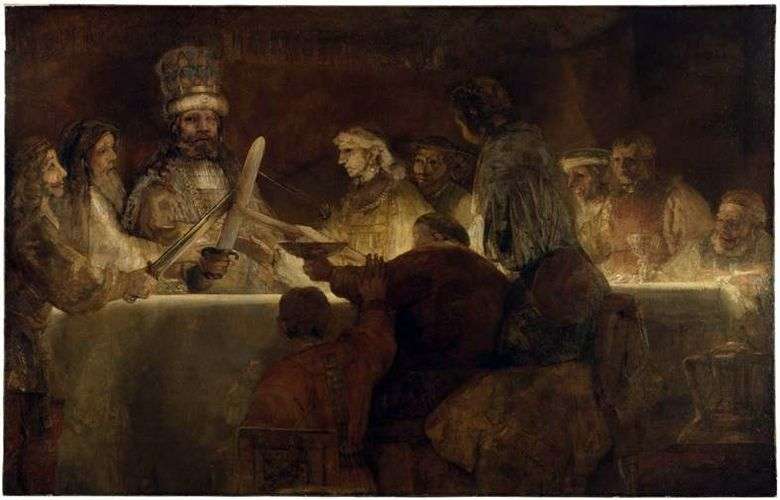 Parcela de Batavian – Rembrandt Harmens Van Rhine
Parcela de Batavian – Rembrandt Harmens Van Rhine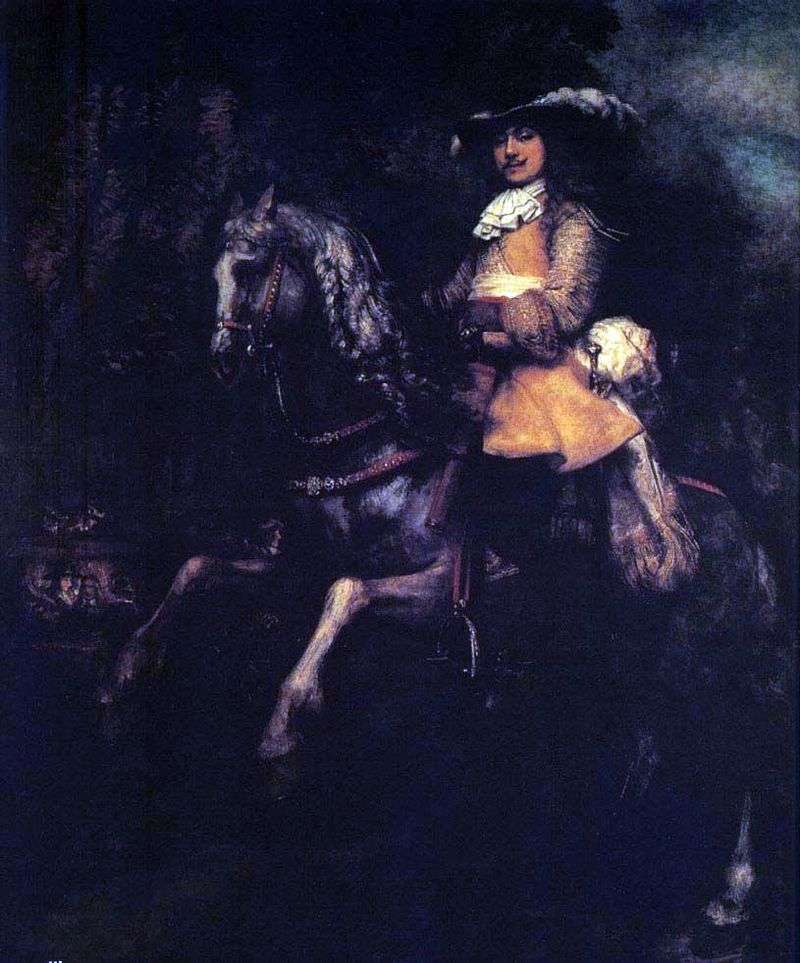 Frederick Riel on horseback by Rembrandt Harmens Van Rhine
Frederick Riel on horseback by Rembrandt Harmens Van Rhine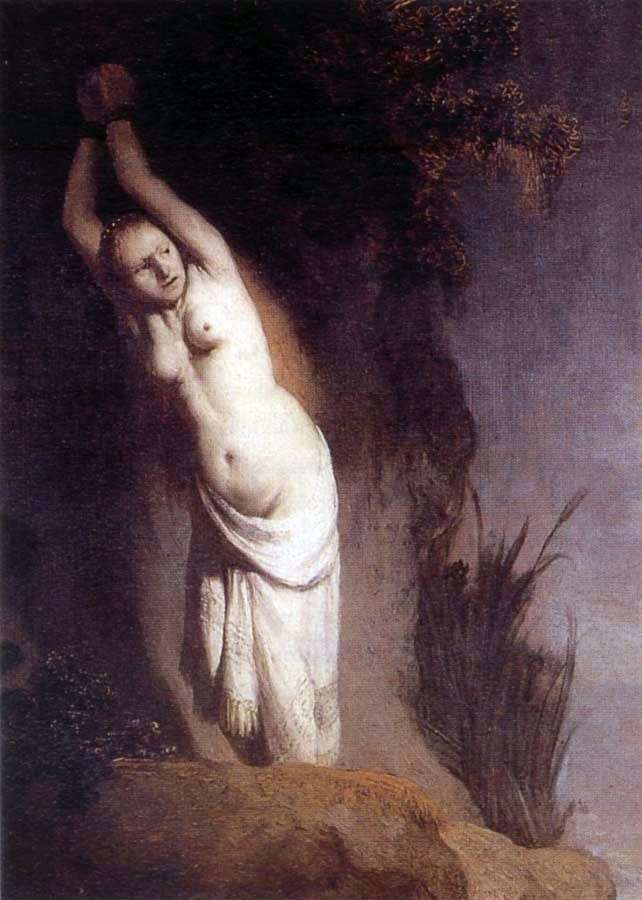 Andromeda by Rembrandt Harmens Van Rhine
Andromeda by Rembrandt Harmens Van Rhine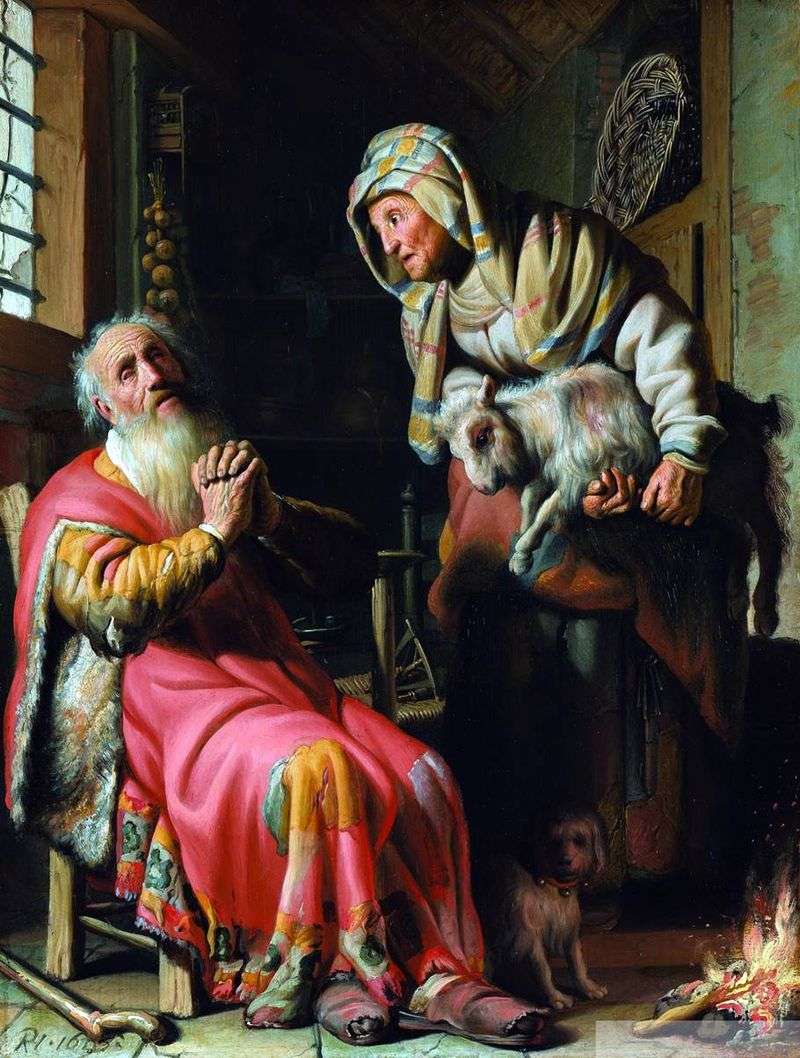 Tovit suspecting his wife of stealing by Rembrandt Harmens Van Rhine
Tovit suspecting his wife of stealing by Rembrandt Harmens Van Rhine Saskia van Eilenburg by Rembrandt Harmens Van Rhine
Saskia van Eilenburg by Rembrandt Harmens Van Rhine Shuttle of Christ in a Storm by Rembrandt Harmens Van Rhine
Shuttle of Christ in a Storm by Rembrandt Harmens Van Rhine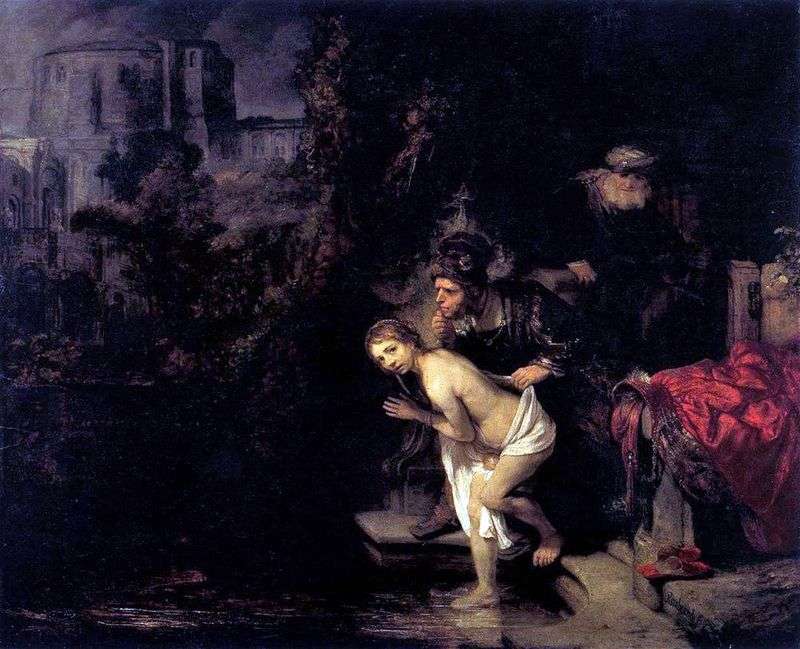 Susanna and the Elders by Rembrandt Harmens Van Rhine
Susanna and the Elders by Rembrandt Harmens Van Rhine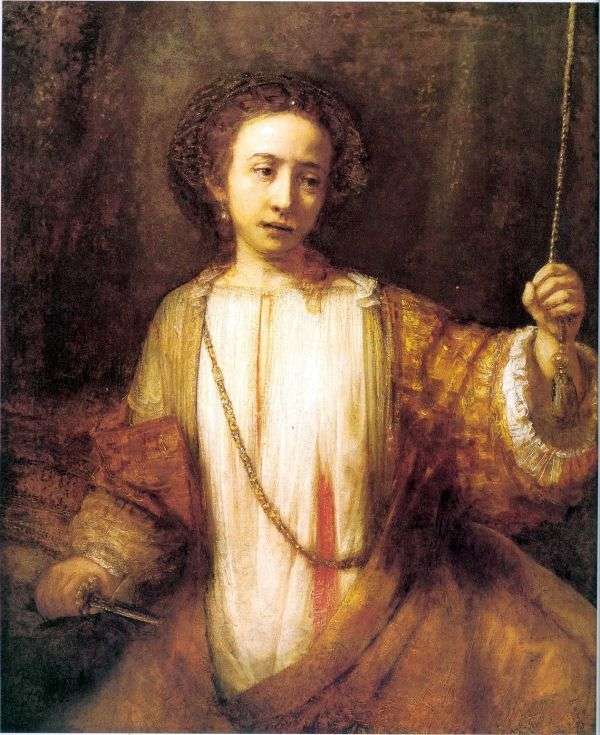 Lucretia Suicide by Rembrandt Harmens Van Rhine
Lucretia Suicide by Rembrandt Harmens Van Rhine